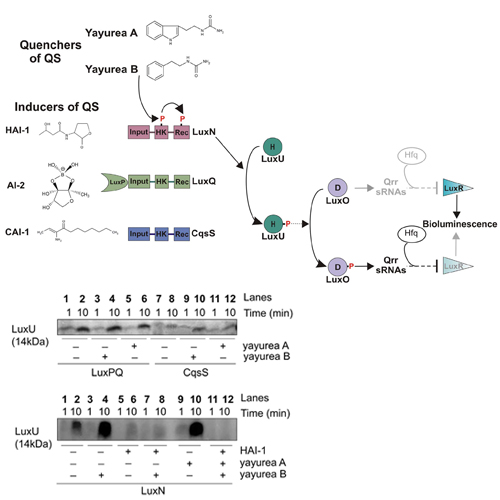A New Class of Quorum Quenching Molecules from Staphylococcus Species Affects Communication and Growth of Gram-Negative Bacteria
26-Sep-2013
PLoS Pathogens, 2013, doi:10.1371/journal.ppat.1003654, 9(9): e1003654 published on 26.09.2013
PLoS Pathogens, online article
PLoS Pathogens, online article
The knowledge that many pathogens rely on cell-to-cell communication mechanisms known as quorum sensing, opens a new disease control strategy: quorum quenching. Here we report on one of the rare examples where Gram-positive bacteria, the ‘Staphylococcus intermedius group’ of zoonotic pathogens, excrete two compounds in millimolar concentrations that suppress the quorum sensing signaling and inhibit the growth of a broad spectrum of Gram-negative beta- and gamma-proteobacteria. These compounds were isolated from Staphylococcus delphini. They represent a new class of quorum quenchers with the chemical formula N-[2-(1H-indol-3-yl)ethyl]-urea and N-(2-phenethyl)-urea, which we named yayurea A and B, respectively. In vitro studies with the N-acyl homoserine lactone (AHL) responding receptor LuxN of V. harveyi indicated that both compounds caused opposite effects on phosphorylation to those caused by AHL. This explains the quorum quenching activity. Staphylococcal strains producing yayurea A and B clearly benefit from an increased competitiveness in a mixed community.











